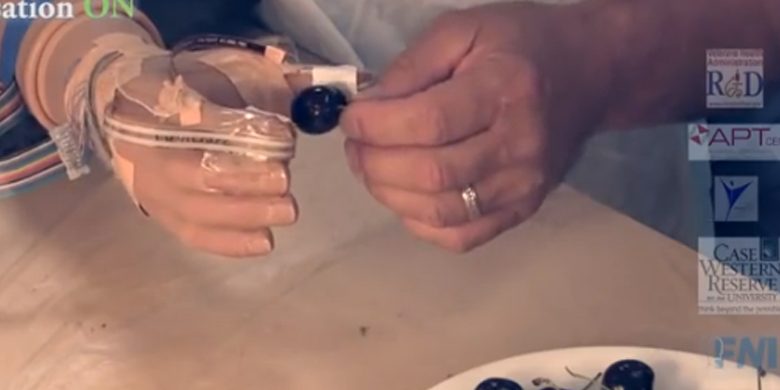Amputee Igor Spetic says the device can even produce the sensation of touching different textures, such as smooth metal, fluffy cotton balls, rough sandpaper, and soft hair.
Over the past few years, artificial hands have come a long way in terms of dexterity. They can grasp, shake hands, point, and, usefully, make the “come hither” gesture.
Now, researchers at the Cleveland Veterans Affairs Medical Center and Case Western Reserve University have made significant progress in building a prosthetic hand that provides something like a sense of touch.
The hand, which you can see put to use in a demonstration in the video above, has 20 sensitive spots that can perceive other objects’ physicality. Implants that connect those spots to nerves in the patients arm have continued to work 18 months after installation, which MIT Technology Review reports, notes is a important milestone since “electrical interfaces to nerve tissue can gradually degrade in performance.”







